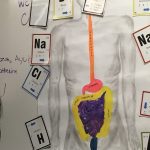Page Contents:

E-Flora BC is an electronic database of plants native to BC. Use the data base to search plant information.
e-Flora – BC – Search Page (Search for Species Page)
Link: flora – atlas BC
Nature Labs_How Dirt Works
PBL: Learning Activities
Links: Time-lapse photography Neil Bromhall
The walk 30 school challenge takes place from May 10, ’21 – June 13, ’21 (Event finished).
Make sure to bring a sunhat and a waterproof jacket to class. Each walk will be approximately 30 minutes long.
Session 2: May 25-May 28, 2021
In Search of Essential Nutrients (From Agricultural Literacy)
Student files
Science Vocabulary
macronutrient: a nutrient that must be present in a relatively large amount to ensure the health of the organism. Macronutrients are building blocks used to make essential biomolecules.
micronutrient: a nutrient required in small quantities to ensure the health of the organism. Micronutrients are often used as cofactors for enzymatic reactions.
nutrient: any of 17 essential mineral and non mineral elements necessary for plant growth
Session 1: May 10 – May 14, 2021
Let’s Talk Science Outreach at UBC Okanagan has created a scavenger hunt, for grades 6-9.
Students from across Canada can participate at home with their family and friends, or with their educators at school.
You will some commonly used scientific terms and apply them to real world objects that surround you as you participate in the scavenger hunt!
Scavenger hunt attempts along with photos of the scientific term examples you found (minimum 3 photos) can be emailed to letstalkscience.okanagan@ubc.ca for a chance to win a National Geographic STEM kit prize! Prize will be mailed to child’s school address.
Submissions will be accepted until May 17th 2021.
 Loading...
Loading...
 Loading...
Loading...
 Loading...
Loading...
Link to article: Secrets of the Shiny yellow buttercup
Buttercups get their bright colour from yellow pigments in the petals’ surface layer, and their shiny gloss is thanks to layers of air just beneath the surface reflecting the light like mirrors. The glowing phenomenon is unique in plants, although something similar happens with some butterfly and bird wings.
The buttercup’s sparkling light also needs the sun to be high in the sky, so May is a good time of year for the flowers.
And buttercup flowers also track the sun. On cold days, the petals make a cup shape like a satellite dish, collecting solar energy from sunshine and warming up the flowers, which makes them even more inviting to insects, perhaps because it helps them to keep up their own temperature.
The cup-shaped flower also focuses the sunlight into its centre where the reproductive organs are warmed up, boosting the ripening of pollen in the stamens and improving the chances of fertilisation in the carpels. And after the flower is pollinated the solar heat might help seed development.
The solar tracking is even more useful in the chill air of alpine regions, where the flowers warm up by concentrating the sunshine, sometimes boosting temperatures by more than 3C.
Link #1: Is this plant a weed – University of Minnesota Extension
Link #2: Stone Soup / Learn how Canadian Researches created cast iron fish to increase Iron absorption
Lump of iron
Dr Charles had a novel idea. Inspired by previous research which showed that cooking in cast iron pots increased the iron content of food, he decided to put a lump of iron into the cooking pot, made from melted-down metal.
His invention, shaped like a fish, which is a symbol of luck in Cambodian culture, was designed to release iron at the right concentration to provide the nutrients that so many women and children in the country were lacking.
The recipe is simple, Dr Charles says.
“Boil up water or soup with the iron fish for at least 10 minutes.
“That enhances the iron which leaches from it.
“You can then take it out. Now add a little lemon juice which is important for the absorption of the iron.”
If the iron fish is used every day in the correct way, Dr Charles says it should provide 75% of an adult’s daily recommended intake of iron – and even more of a child’s.












